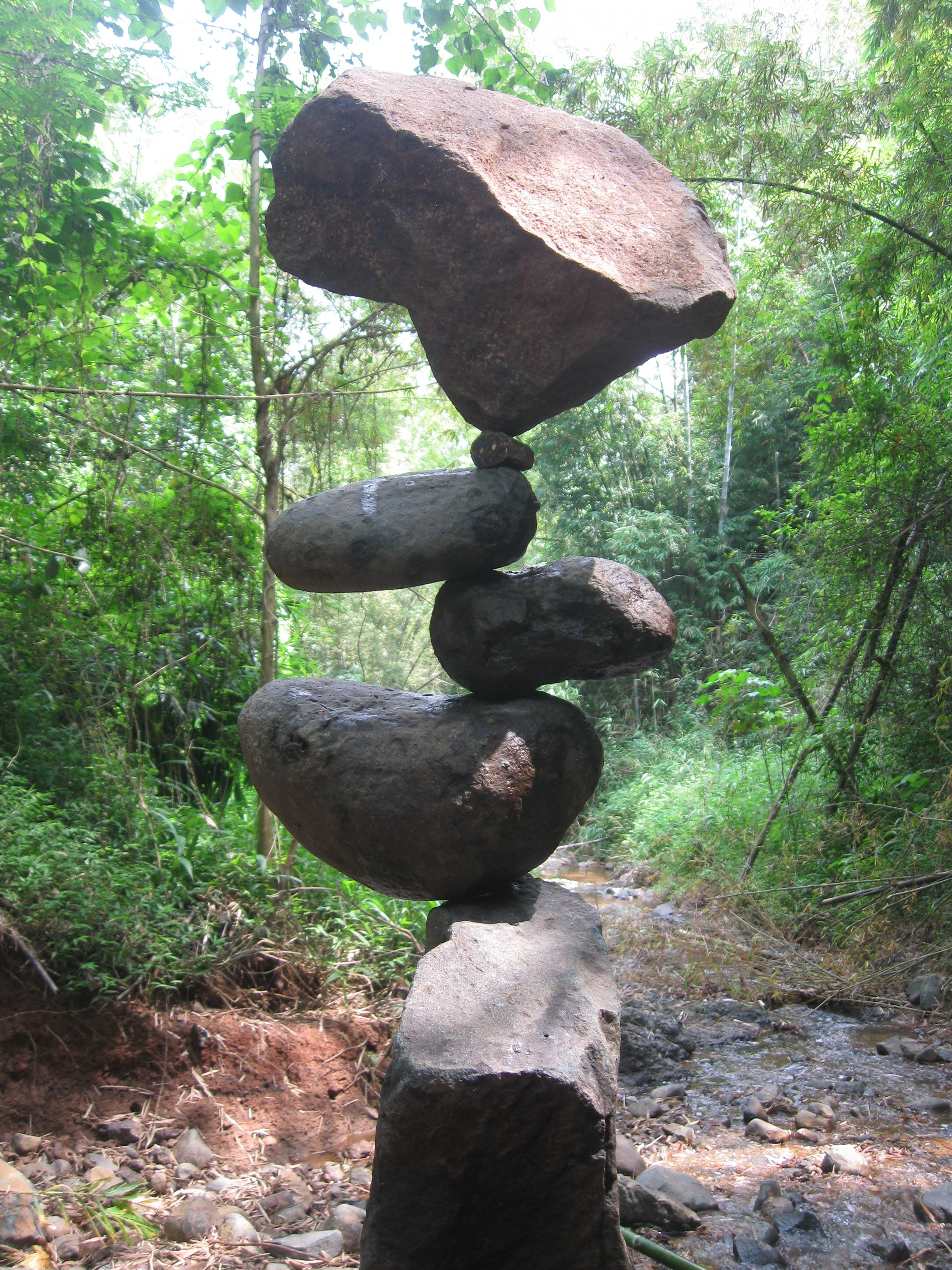What is rock stacking?
Rock stacking is an art, hobby and/or spiritual practice in which multiple rocks are naturally placed on top of each other in different positions to form a balanced spire. There is no adhesives or support allowed for stacking the rocks. Sometimes an artist will have a ritual like silent meditation, shaking off excess energy or will splash water on the rocks being stacked but these thing are not essential for success. Essentially, rock stacking involves placing some combination of rock or stone in arrangements which require patience and sensitivity to generate, and which appear to be physically impossible while actually being only highly improbable.

History
Rock stacking is an ancient art that first began with the indigenous people, some of which may date to 12,000 years ago. The older rock structures that have been made often being referred to as cairn; The word cairn comes from the Scottish Gaelic roots. Cairns are often erected as landmarks, a use they have had since ancient times. They have also been built and used as burial monuments; for defense and hunting; for ceremonial purposes, sometimes relating to astronomy; to locate buried items, such as caches of food or objects; and to mark trails, among other purposes.

placed for astronomical purposes, located east of the modern day city of Inverness, Scotland, and dates from c. 2500 BCE
Finding balance
There is a yin-yang relationship between the two rocks being placed together. With one stone having concave (yin) surface while the other stone having a convex (yang) shape to it, both of them fitting nicely together. While stacking the rocks, each artist seems to have a different method for finding this balance before proceeding to stack the next rock. Some artist describe it as listening and feeling for a type of silence to take place, once this is found then there will be balance between the rocks.
Other artist describe it as a force of earth energy, a lot like magnetism, that connects the two stone together when they connect in the right polarity. With the weight of each rock being a variable. Sometimes the rock being to heavy to move, almost like it is stuck to the earth; While other times being very light and fully cooperating.

Styles
There are different styles to each type of rock stacking. Each style uses a different form of balance.
- Balanced stacking – rocks lain flat upon each other to great height

- Counterbalance – lower rocks depend on the weight of upper rocks to maintain balance

- Free style – mixture of the two above; may include arches and sandstone

- Pure balance – each rock in near-point balance

Controversy

Some visitors to natural areas who wish to experience nature in its undisturbed state object to this practice, especially when it intrudes on public spaces such as national parks, national forests and state parks.
In different areas rock stacking is discouraged or prohibited based on different reasons, a few of them being public safety concern and trying to prevent disturbance to the environment.

Michael Grab, a Boulder artist who goes by the name Gravity Glue, said that police threatened to ticket or jail him for creating rock stacked sculptures that the community has been enjoying for years.
Read the rest of the article featured on Raw Story by David Edwards
in the end, with support of the community, the police once again let him continue rock stacking. I think as long as something is not hurting anyone or infringing on any ones property then it should be allowed.
Here are some videos of gravity glues art. First one is a time lapse of multiple pieces of rock stacking art hes done. The second one is in real time, showing step by step the processes he goes through creating his art.
I Love rock stacking and think that its more connected to the environment than many of the other things created by humankind. I think it should be fully supported and embraced by all.
What do you think about rock stacking?
